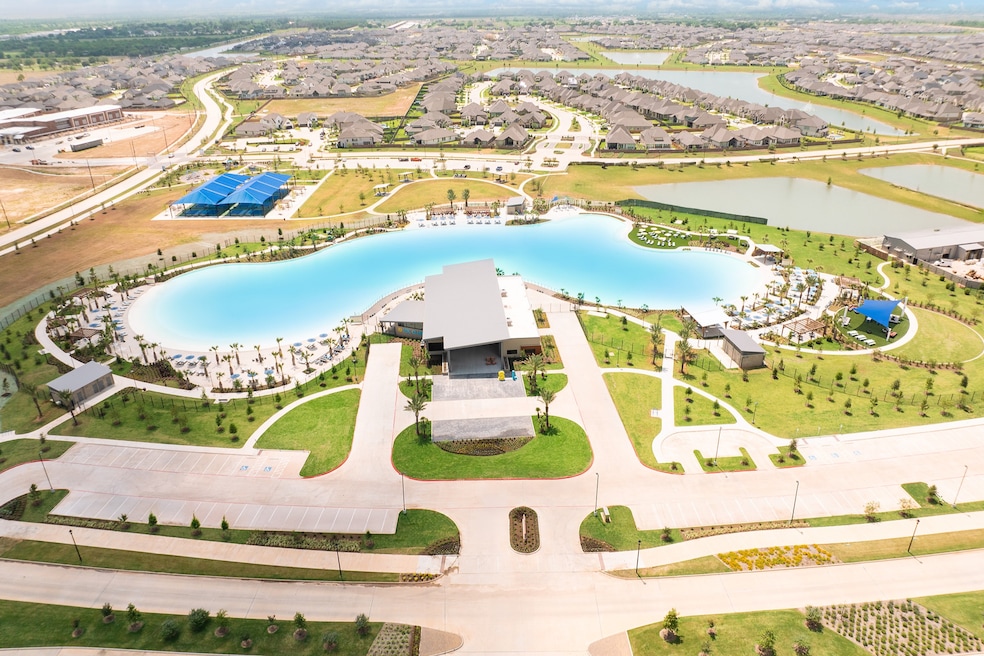More than two decades ago, Ann and Landon Perdew bought a home in The Villages, a master-planned community about 60 miles northwest of Walt Disney World in Central Florida.
At the time, the 55-and-over community had about 20,000 residents, mostly retirees eager to take in the development's robust roster of shops, restaurants and recreational activities.
"It was planned and well-thought-out," resident Ann Perdew told Homes.com. "All the conveniences you needed were put into place."

Those who move to master-planned communities say they like having easy access to common-area amenities and that their homes are well-maintained and tend to hold their value. But the lifestyle isn’t for everyone. Some say the communities can grow too big and bring dull uniformity, increased fees and heavy-handed restrictions.
"They're a blessing and a curse, I would say," said U.S. housing analyst Jack McCabe of McCabe Research & Consulting.
The RCLCO consulting firm has studied the developments for more than three decades. It defines a master-planned community as one with a comprehensive plan created by an overarching developer that incorporates different housing types, sizes and prices. In addition, the communities have shared common spaces and amenities.

Typically, the master developer establishes so-called deed restrictions, like what colors you can paint your house, that apply to all homes. Those rules can be modified or kept in place once the developer turns over the community to a board of resident directors, McCabe said.
Master-planned communities can offer resort-style living

Some developments handle the mowing and landscaping, ensuring homes are cared for to the same standard at regular intervals. That gives owners more free time to play pickleball or golf, swim laps in the community pool, enjoy hobbies and make friends.
Some communities have clubhouses featuring games, bars, restaurants and live events. The developments are often gated, offering a level of security that many owners appreciate.
“There are definite advantages to living in a planned community," South Florida real estate lawyer Gary Singer said. "The rules are designed to protect property values and create a pleasant environment for everyone."


The limited architectural styles of many communities can lead to a sameness that either looks aesthetically clean or monotonous, depending on your point of view.
Likewise, opinions can differ on the common deed restrictions. You may be okay with preventing people from painting pink and green stripes on their homes but chafe at a ban on backyard sheds or limiting the number, types and sizes of pets.

Unpaid dues mean liens
The trouble is that many people barely glance at the governing documents upon buying into a master-planned community, selectively looking at certain rules, such as those pertaining to the use of the clubhouse, according to Singer.
He said many residents may not realize that unpaid dues can turn into a lien on the home, giving the developer or homeowners association the power to foreclose, even if the mortgage is current.
There can be other costs that put a burden on homeowners, especially people on fixed incomes.
In recent years, communitywide renovations or repairs have led to special assessments on top of the regular monthly or quarterly dues at some developments. The fees have a way of invoking spirited debates among board members and other homeowners, and that occasionally breeds infighting and discontent, according to McCabe.
"I know people who swore they'd never live in an HOA again," he said.
Last year, Texas and Florida dominated the top 50-selling U.S. master-planned communities. The Houston area was the largest master-planned community market in the country, with more than 7,500 sales among the top 50 developments, according to RCLCO rankings.
The Villages leads in sales
In 2024, The Villages totaled 3,208 sales, the most of any community. Lakewood Ranch in Sarasota, Florida, placed second with 2,110. Both developments again ranked Nos. 1 and 2 in sales in the firm's midyear 2025 update.

Sales have softened recently as more homes are listed. But in the years following the Great Recession, homeowners have “sought the safety in master-planned community environments, trusting their investment would be protected against broader market fluctuations,” RCLCO said in its midyear update.
At The Villages, few homes are governed by HOAs, but deed restrictions apply to all of the properties, real estate agents say. Owners who buy new and existing homes at The Villages this year pay a monthly $199 amenity fee, though the cost varies for residents who have been there longer.
Ann Perdew, a retired teacher, said she doesn't mind the amenity fee and believes residents get good value for the money. She also supports the deed restrictions, saying they protect the overall quality of life.
Still, The Villages today hardly resembles the development the Perdews bought into in 2003. It now has thousands of clubs and activities, dozens of golf courses, health clinics and a hospital.
The Villages covers 90 square miles across three counties, with estimates putting the number of homes at more than 70,000 and a population approaching 160,000. To reduce traffic congestion, most residents ride golf carts to the town squares for eating, shopping and nightly music and dancing.
"The greatest drawback is that it just got so big," Perdew said. "There's too much stuff. It's become a large city. It's bigger than the county we lived in in Kentucky."
